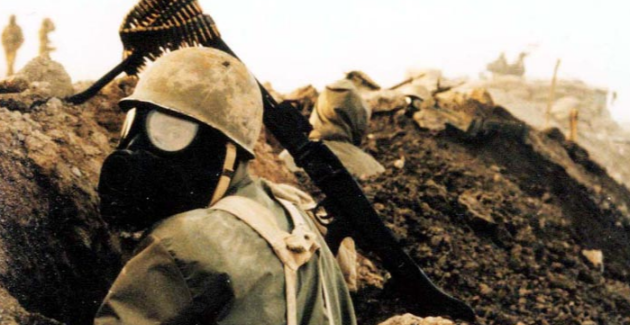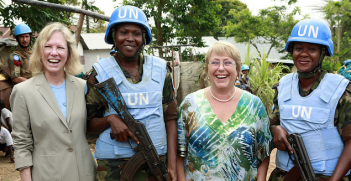Why Chemical Weapons are Not Quite Cricket

The international taboo against chemical weapons is widespread albeit inconsistently applied. The reaction to the recent chemical attack in Syria demonstrates the West’s historical horror at the use of chemical weapons.
Five years ago, US President Barack Obama declared that the use of chemical weapons in Syria would represent the crossing of a red line, and require a military response. Following the 21 August 2013 chemical weapons attack in Gouta, Damascus, it looked briefly like the US would enforce its red line but Syrian President Bashar al-Assad then pledged to dispose of his previously unacknowedged chemical weapons. Syria signed the Chemical Weapons Convention in October 2013 and—ostensibly—the last of Assad’s 1,300-tonne chemical weapon stockpile was removed from Syria in June 2014. Most recently, the chemical weapons attack on civilians in Khan Shaykhun, Syria, on 4 April drew worldwide condemnation and revulsion; US President Donald Trump responded by ordering a cruise missile strike on a Syrian airbase.
Why is it that, in a war that has killed hundreds of thousands and displaced millions more, an attack that killed 80 people has attracted the attention of a world increasingly desensitised to the horrors of war? James B. Conant, who was involved in the American chemical weapons program during World War I and later the Manhattan Project, could not see “why tearing a man’s guts out by a high-explosive shell is to be preferred to maiming him by attacking his lungs or skin.”
The 1993 Chemical Weapons Convention bans the “development, production, acquisition, stockpiling, retention, transfer or use of chemical weapons.” Chemical weapons are weapons of mass destruction (WMDs). Sophisticated chemical weapons like sarin and VX are odourless and colourless but kill in gruesome, horrific, and torturous ways. Chemical weapons are harder to contain to legitimate targets compared with conventional weapons, as environmental conditions can spread their effects unpredictably and indiscriminately. Since World War I, they have been deployed specifically to generate terror and disorder.
Historically, the use of chemical weapons has been linked to the very worst of humanity. They were widely used in World War I and killed tens of thousands of soldiers. This is a relatively small number in context, but chemical weapons had a severe psychological effect on soldiers at the front, many of whom became more terrifed of chemical attacks than conventional ones, particularly since there was very little protection from chemical attacks. Many senior officers on all sides regarded the use of chemical weapons to be “unsoldierly” and “not quite cricket.” Wilfred Owen’s poem, Dulce et Decorum Est, written near the end of World War I, helped make chemical warfare a synonym for industrial scale, technologically assisted slaughter.
Under the 1925 Geneva Protocols, the use of chemicals in warfare was “justly condemned by the general opinion of the civilised world”. In the 1930s, Mussolini’s Italy drew international condemnation for its use of chemical weapons to expedite victory in its war with Ethiopia. Appealing to the League of Nations, Ethiopia’s Emperor Haile Selassie described the effects of the chemical attacks:
“Men and animals succumbed. The deadly rain that fell from the aircraft made all those whom it touched fly shrieking with pain. All those who drank the poisoned water or ate the infected food also succumbed in dreadful suffering. In tens of thousands, the victims of the Italian mustard gas fell.”
Industrialised countries did not use chemical weapons against each other another during World War II for fear of retaliatory chemical attacks, while major powers ensured they had enough chemical weapons of their own to act as a deterrent. This did not stop some countries using chemical weapons against those without such a deterrent. The Japanese used them extensively, both in battle and as part of medical research conducted upon hapless prisoners of war and civilians. Meanwhile, chemicals such as Zyklon B were used to kill millions of people in the Nazi death camps. These atrocities cemented into the Western public’s mind the notion that chemical weapons are only used by wicked countries and are themselves evil.
Following World War II, most uses of chemical weapons were by despotic regimes, including that of Saddam Hussein, whose forces attacked Iranian soldiers as well as Iraqi Kurds with chemical weapons in the 1980s. This further reinforced the idea that chemical weapons were barbaric, leading to the derogatory characterisation of chemical weapons as “the poor man’s atomic bomb”. A notable exception was the American use of Agent Orange in Vietnam. Even then, its use became a rallying point for opposition to US involvement in Vietnam.
Chemical weapons use is internationally recognised as a war crime. Under the 1993 Chemical Weapons Convention, all signatories officially declare their aim to completely destroy their chemical weapons stockpiles and significant inroads have been made towards achieving that aim. The attack on Khan Shaykhun is an assault on these international norms. How the West responds will determine whether the near-century-long taboo is strengthened or weakened. Whether or not singling out chemical weapons is strictly logical, we must protect any limitations placed upon the death and injury caused by modern warfare.
Stjepan Bosnjak is a Master of Arts (Research) student at Victoria University.
This article is published under a Creative Commons Licence and may be republished with attribution.





